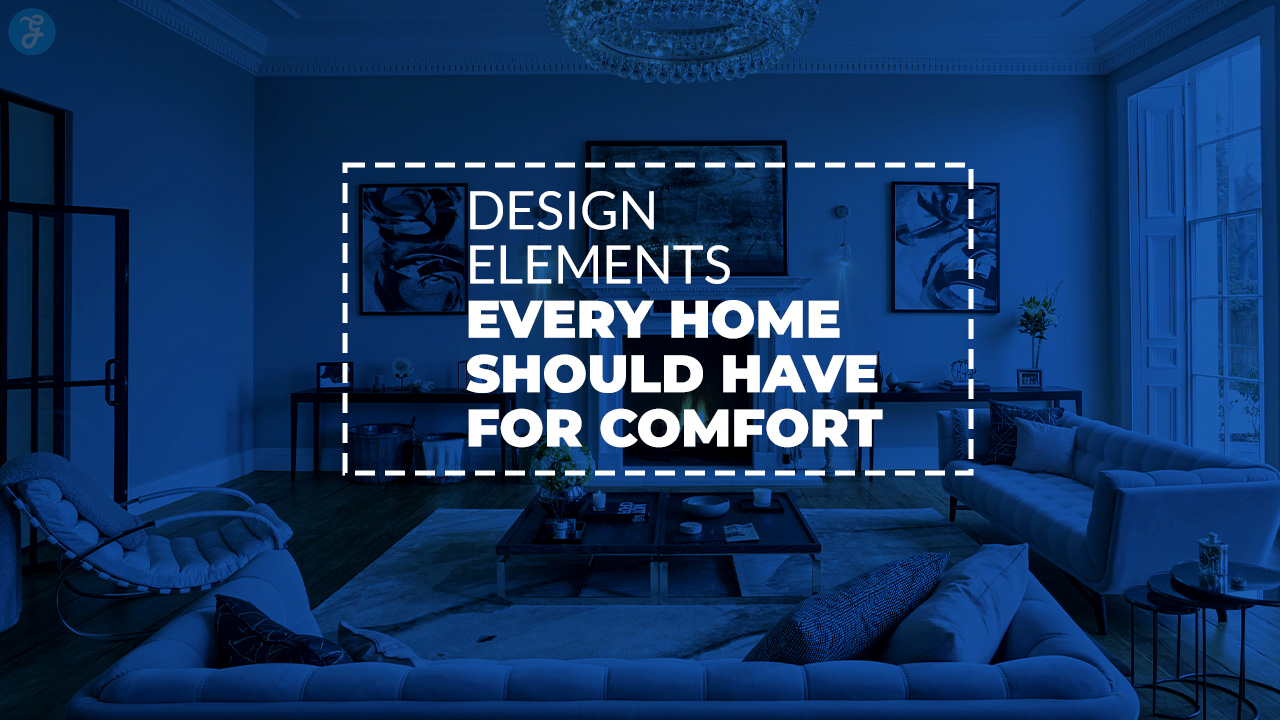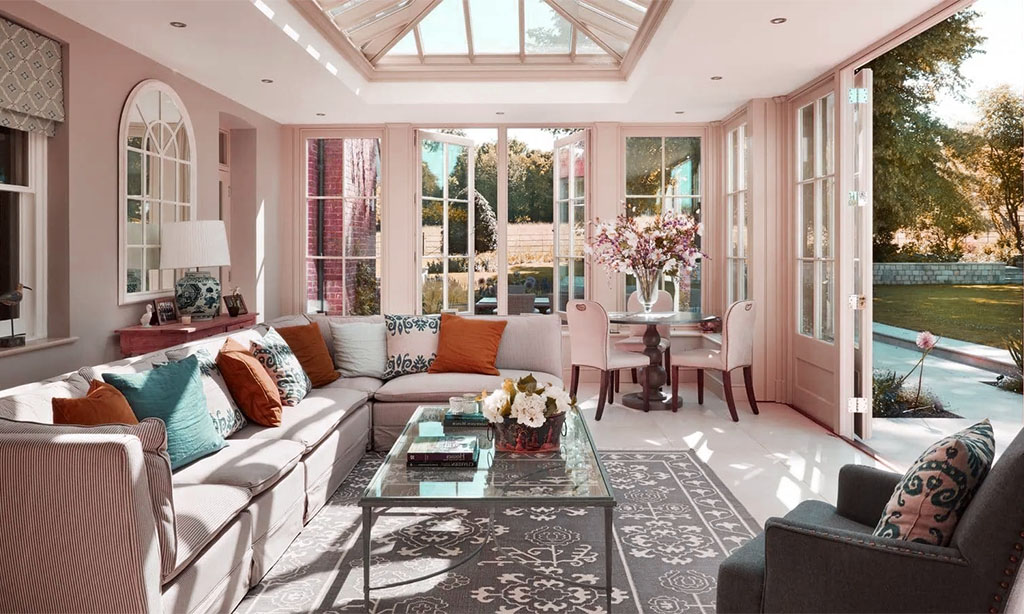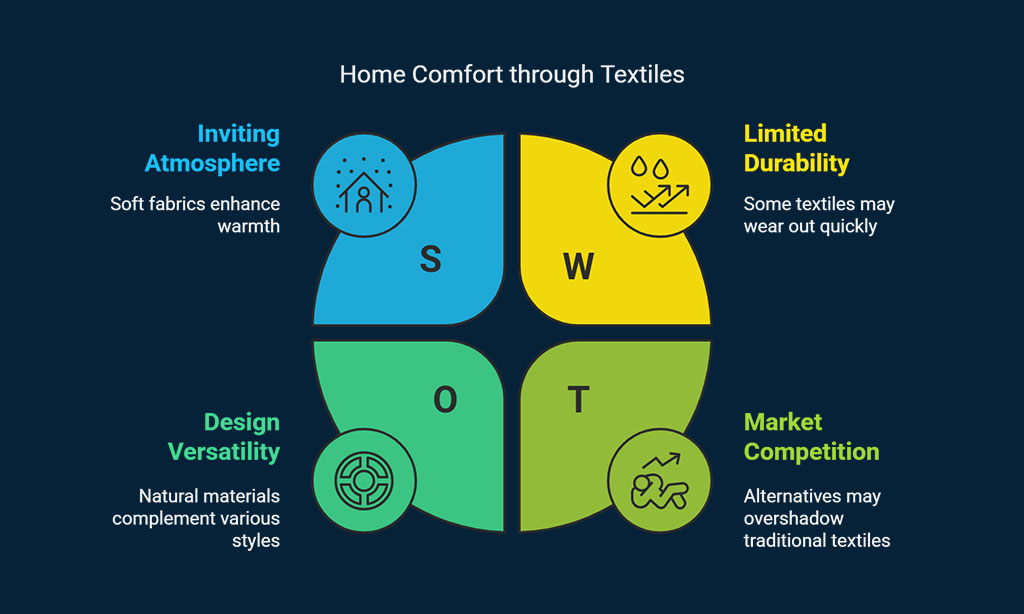Feeling like your home is missing something? Maybe it doesn’t feel as cozy or practical as you’d like. Many homes lack the right design touches that make a space truly comfortable to live in.
Did you know that small changes, like adding natural materials or better lighting, can transform a room? Design elements such as neutral tones and functional layouts make your house visually appealing while also improving daily comfort.
In this post, we’ll share five essential design tips for creating a welcoming and relaxing home. Stay with us for simple ideas that can make a big difference!
Enhancing Home Comfort with Natural Light and Ventilation
Fresh air and sunlight change everything, don’t they? Simple adjustments like bigger windows or open spaces can make your home feel alive.
Strategies for Maximizing Windows and Skylights
Natural light brightens up your home and makes it cozier. Skylights and windows can transform any space if used right.
- Place large windows in rooms where you spend the most time, like the living room or kitchen. This helps bring in more natural light during the day.
- Install skylights in dim areas like hallways, bathrooms, or attics to make them feel open and airy.
- Choose thin curtains or blinds that let sunlight through while ensuring privacy. Sheer fabrics work great for this.
- Position furniture around windows to take advantage of both light and the view outside. An upholstered chair by a sunny window can create a perfect reading corner.
- Clean your windows regularly to keep them clear of dirt or streaks. Even small smudges can block precious sunlight.
- Use mirrors near windows to reflect light into darker spaces, making your room appear larger and brighter.
- Consider installing energy-efficient windows to reduce energy loss while keeping warm during winter.
- Use smart thermostats alongside natural ventilation from your windows to balance temperature indoors.
Techniques for Effective Cross-Ventilation
Cross-ventilation keeps the air fresh and cool in your home. It helps save energy and improves comfort. Follow these steps to create effective cross-ventilation:
- Open windows or doors on opposite sides of a room. This creates airflow from one side to the other.
- Use window unit air conditioners with fans that can help push stale air out while bringing fresh air in.
- Place furniture, like chest of drawers or upholstered furniture, away from windows to avoid blocking airflow.
- Install vents or openings above doors to allow air circulation even when doors are closed.
- Plant shrubs or trees outside windows to guide wind toward the house and add shade for cooling.
- Keep interior doors open during the day to let air move freely between rooms.
- Adjust HVAC systems for extra humidity control while ventilating naturally through windows.
- Add ceiling fans near ventilation paths for stronger airflow and better temperature balance indoors.
Selecting Comfortable and Functional Furniture
Comfort is king when choosing furniture, but function should never take a backseat. Why not pick pieces that fit your space, style, and daily needs perfectly?
The Benefits of Ergonomic Seating
Ergonomic chairs support the body. They reduce back, neck, and shoulder pain. Proper lumbar support keeps your spine aligned. Adjustable features allow you to sit comfortably for hours.
Many designs also improve blood flow by promoting better posture.
Investing in ergonomic seating can boost productivity at home or work. These chairs combine function with comfort, creating a timeless design fit for any interior style. Good seating helps maintain focus while adding a touch of smart home decor to your space.
Advantages of Multi-Purpose Furniture
Multi-purpose furniture saves space and adds function. A sofa bed, for example, offers seating during the day and a guest bed at night. Foldable tables or ottomans with storage bring style while keeping clutter hidden.
Less is more when every piece serves multiple needs.
Using such items helps with functional layouts. It makes rooms feel open yet practical, fitting both small spaces and large homes alike.
Mastering Layered Lighting Design
Good lighting can change how a room feels and works. Mix different lights to create both function and mood, making your home more inviting.
Integrating Ambient, Task, and Accent Lighting
Lighting sets the mood in any room. A well-thought-out lighting plan makes a home cozy, functional, and stylish.
- Use ambient lighting for the overall glow. Ceiling lights or large fixtures like chandeliers can brighten up an entire space. Soft, neutral tones work best for a timeless design.
- Add task lighting for specific areas. Table lamps near desks or pendant lights over kitchen counters focus light where it’s needed most. Consider tasks like reading, cooking, or working to place these lights effectively.
- Include accent lighting to create visual interest. Highlight artwork, shelves, or architectural features with small spotlights. This adds charm and depth to the room’s look.
- Choose smart lighting systems for flexibility. These allow dimming and color adjustments from your phone or voice command. They also save energy and improve comfort.
- Use layers of warm and natural light along with energy-efficient bulbs to reduce costs while keeping rooms inviting.
Small adjustments here can transform how your home feels daily!
Benefits of Smart Lighting Systems
Smart lighting systems save energy. They dim or turn off lights when no one is in the room. Some even adjust brightness based on natural light, reducing electricity bills.
These systems also boost comfort and mood. Change colors or brightness with a simple tap to fit any moment—whether relaxing on the couch or hosting a dinner party. Smart lights are easy to control with apps or voice commands, making life simpler every day.
Choosing Textures and Materials for Cozy Warmth
Soft fabrics and natural materials create a home that hugs you back. From plush rugs to wooden accents, the right textures can make every inch feel inviting.
Importance of Soft Textiles like Rugs and Cushions
Rugs and cushions make a room feel warm and inviting. A plush rug underfoot adds comfort during colder months. Cushions provide support and softness, especially on firm furniture.
Textiles like these also bring color, patterns, and texture to your space. Neutral tones or rich hues can match any interior design style. Quality materials last longer, adding both function and timeless design to your home.
Soft layers create cozy warmth while giving rooms a lived-in look that feels personal yet stylish.
Benefits of Natural Materials like Wood and Stone
Wood and stone add warmth to any room. These natural materials feel authentic and cozy. A wooden table or stone countertop brings timeless design to your home. They also last for years, making them a smart choice.
Natural tones from wood and stone blend well with neutral color palettes. Wood floors can make spaces feel open yet grounded. Stone, like slate or marble, adds texture and visual interest without being flashy.
These materials create calm spaces that are both stylish and functional.
Adding Personal Touches for a Welcoming Decor
A home feels alive when it reflects you. Small details, like favorite colors or memorable pieces, can make any space more inviting.
How to Display Family Photos and Artwork Effectively
Displaying family photos and artwork can make your home feel inviting and personal. You just need the right techniques to showcase these treasures beautifully.
- Use neutral tones for frames or mats. This makes the display look timeless and avoids clashing with other decor.
- Arrange pieces in odd numbers, like groups of three or five. Odd groupings create better visual interest.
- Hang art at eye level, about 57 inches from the ground to the center of the piece. It helps everyone enjoy it comfortably.
- Combine old and new items together for character. For example, mix vintage family portraits with modern prints.
- Add floating shelves to display smaller pieces alongside plants or books for variety.
- Use a gallery wall layout for a big impact on one wall. Plan the design before hanging by laying everything out on the floor first.
- Swap photos seasonally to keep things fresh and meaningful throughout the year.
- Consider lighting such as picture lights or smart bulbs to highlight your collection without damaging it over time.
- Stick with quality materials for prints and frames that last longer, protecting your precious memories.
- Mix sizes and orientations, like verticals with horizontals, so the arrangement feels balanced yet dynamic!
Incorporating Plants for Indoor Vitality
Plants can make your home feel alive and fresh. They add color, purify the air, and create a calming atmosphere.
- Use indoor plants to clean the air naturally. NASA studies show that plants like peace lilies and snake plants reduce harmful toxins indoors.
- Place greenery in neutral spaces for visual interest. A fiddle-leaf fig can brighten a plain corner, while small succulents work well on shelves.
- Choose low-maintenance options if you have a busy schedule. Spider plants or pothos thrive with little care but still boost vitality.
- Add hanging planters near windows to maximize natural light for your plants. This setup also saves floor space in smaller rooms.
- Introduce herbs like basil or mint in the kitchen for both decor and function. These can be used in cooking while keeping the room fragrant.
- Use large potted plants, such as rubber trees, to balance open spaces in living areas. They bring warmth and texture to modern layouts.
- Mix pots with different textures and materials, like clay or ceramic, for added charm and timeless design appeal.
- Group plants of varying heights together for depth and character without overcrowding an area.
- Incorporate natural materials around your greenery—wooden shelves or stone planters—to match other timeless elements at home.
- Keep some flowering indoor species, like orchids or lavender, to provide pleasant scents and pops of color year-round!
Takeaways
A cozy home needs thought and balance. Natural light can make any space lively, while proper ventilation adds fresh air. Furniture should be both comfy and useful—think chairs that feel good or a sofa bed for guests.
Lighting layers, like soft lamps and bright task lights, create mood and function. Materials like wood or cushions bring warmth, while personal touches like photos or plants add charm.
Small changes lead to big comfort, so start today!
FAQs
1. What role does designer furniture play in creating comfort at home?
Designer furniture adds both style and practicality to a space. It combines timeless design with function, making your home feel inviting while staying visually interesting.
2. How do neutral tones improve the comfort of a room?
Neutral tones create a calm atmosphere that’s easy on the eyes. They work well with natural light and can balance bold elements without feeling overwhelming.
3. Why is natural light important for comfortable living spaces?
Natural light makes rooms feel open and warm. It reduces reliance on artificial lighting, which helps save energy and creates a welcoming vibe.
4. Should heating and cooling systems be part of home design for comfort?
Yes, they are essential for maintaining year-round comfort. A good system keeps temperatures steady, whether you’re dealing with summer heat or winter chills.










































